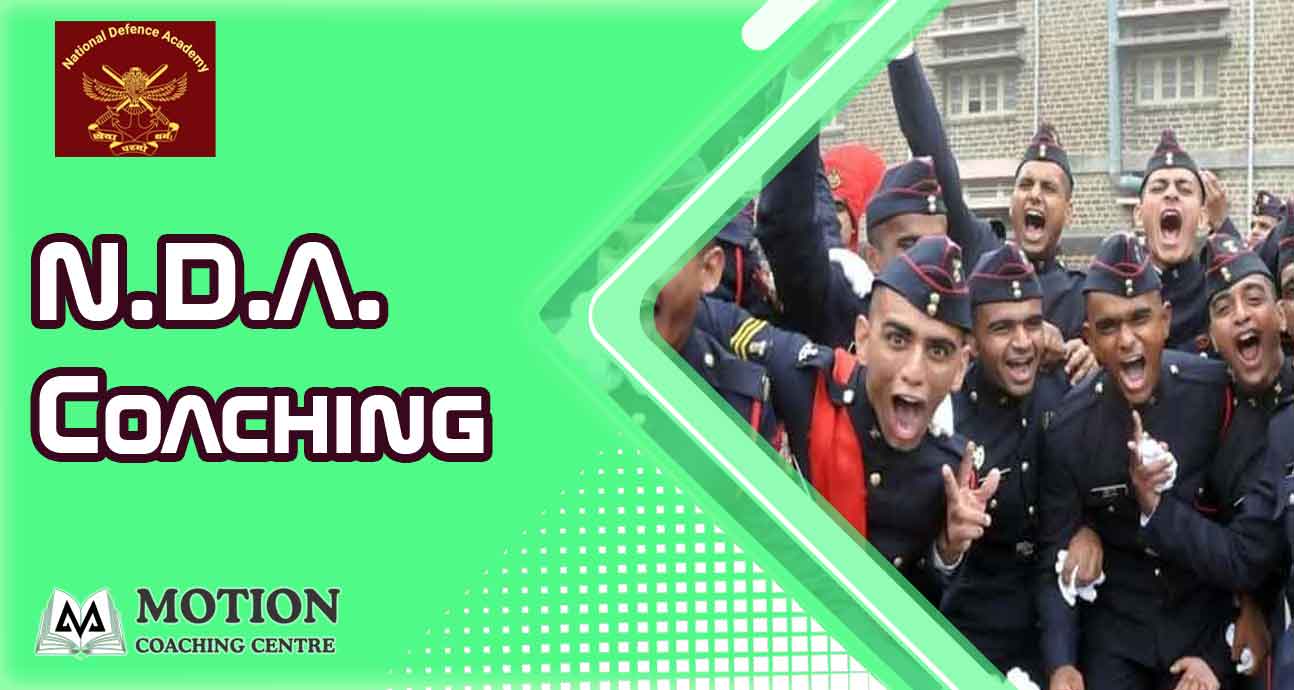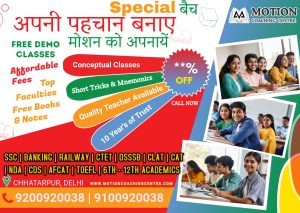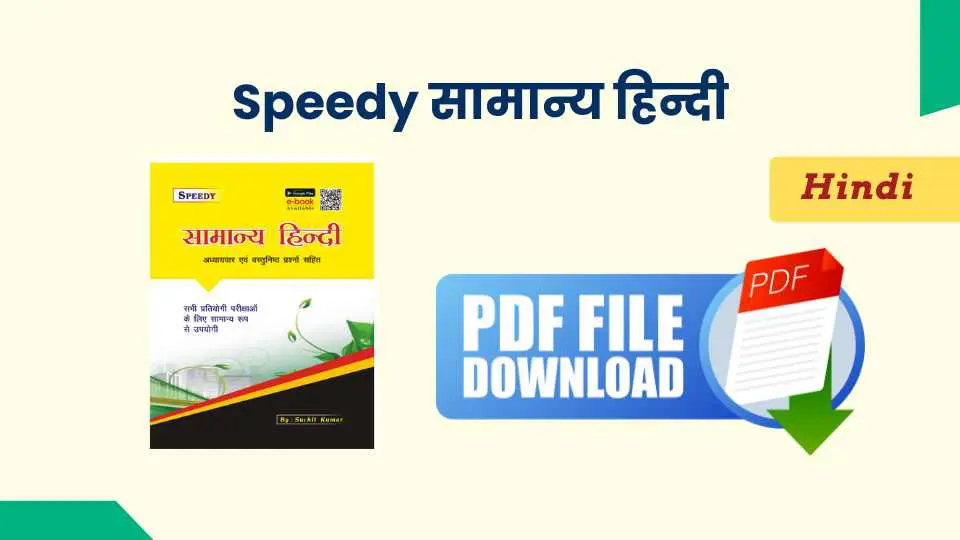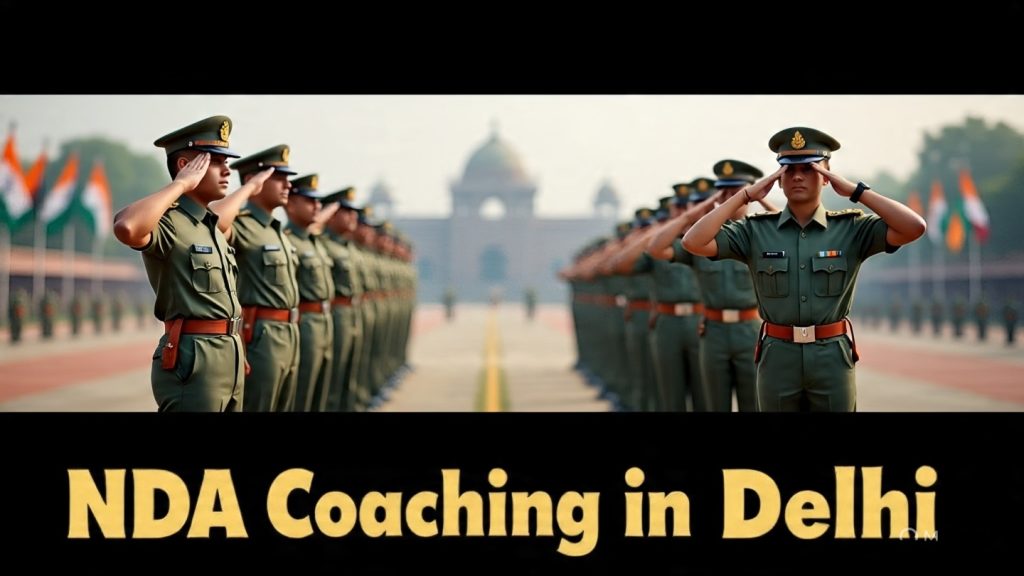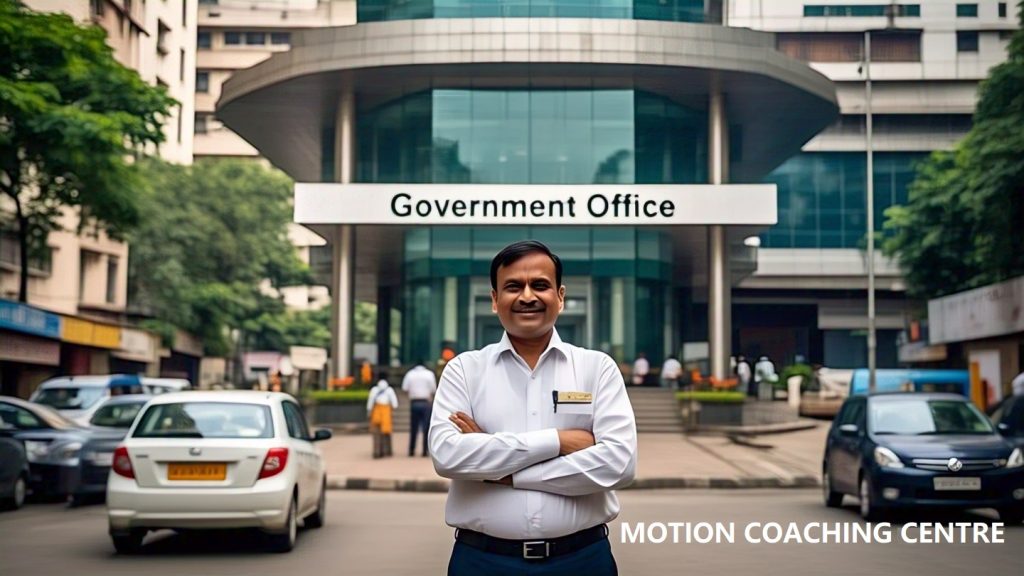NDA Coaching in Delhi | एनडीए कोचिग इन दिल्ली
Are you looking for (National Defence Academy) NDA coaching in Delhi and South Delhi then you are at right place because motion coaching centre provides NDA coaching in Delhi that will make you able to crack NDA examination in minimum attempts.
These National defence academy exams are very tough to crack and need great efforts by aspirants and their teachers. Our top faculties selected by taking multi level eligibility aspects. They are able to give maximum success rate in our batches of nda coaching. So we can assure the success of our students with high quality content study material for nda exams. We have various centers opening in Delhi. We offer limited student batches so every students get personal attention in class.
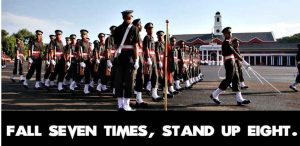
What is NDA Exam?
National Defence Academy (NDA) is the Joint Services academy of the Indian Armed Forces. The UPSC (Union Public Service Commission) conducts a national level exam called as NDA Exam. This exam is held for the candidates who want to join Indian Defence Forces (Army, Navy & Air Force). Every year many aspirants come forward to take this exam. NDA Examination will be organized two times in a year.
What is NDA Eligiblity ?
The eligibility criteria of NDA comprise four main aspects that are mandatory for applicants to fulfil. The four main aspects of NDA eligibility are:
- NDA Age Limit, Marital Status & Gender
- NDA Citizenship/Nationality
- NDA Educational Qualification
- NDA Physical/ Medical Qualification
Eligibility For NDA – Age Limit, Sex & Marital Status
NDA I Age Limit – Only unmarried male candidates born not earlier than 2nd July 2002 and not later than 1st July 2005 fulfil the eligibility for NDA exam.
| NDA Age Limit | Age for Unmarried Male Candidates |
| Lower Age Limit | 15.7 years (not earlier than 02nd July 2002)/ 16 years during the commencement of course |
| Upper Age Limit | 18.7 years (not later than 1st July 2005)/ 19 years during the commencement of course |
NDA II Age Limit – Only unmarried male candidates born not earlier than 2nd January 2003 and not later than 1st January 2006 are eligible for NDA exam.
| NDA Age Limit | Age for Unmarried Male Candidates |
| Lower Age Limit | 15.7 years (not later than 1st January 2006)/ 16 years during the commencement of course |
| Upper Age Limit | 18.7 years (not earlier than 2nd January 2003)/ 19 years during the commencement of course |
To put it simply, candidates should be between the age of 16.5 years and 19.5 years to be eligible for the exam.
Important Note –
- Females and married male candidates are not eligible to apply for NDA Exam.
- The date of birth mentioned in the application must be the same as that entered in the Matriculation/ 10th/ Secondary School Leaving Certificate.
- Candidates need to submit certificates for proof of age after the declaration of the result of the written exam.
- Candidates must undertake not to marry until they complete their full training. A candidate who marries subsequent to the date of his application though successful at this or any subsequent Examination will not be selected for training. A candidate who marries during training shall be discharged and will be liable to refund all expenditure incurred on him by the Government.
Candidates willing to appear for NDA examination must go through the detailed NDA Syllabus and exam pattern to kickstart their preparation.
NDA Eligibility – Nationality / Citizenship
Candidates willing to appear for the National Defense Academy or Naval Academy exam are required to fulfil the NDA eligibility condition in terms of Nationality Or Citizenship.
Only the aspirants who fulfil the following conditions of nationality will be allowed to appear for the examination.
- A citizen of India, or
- A subject of Nepal, or
- A subject of Bhutan, or
- A Tibetan refugee permanently settled in India from and before January 1, 1962.
- A person of Indian origin migrated from Pakistan, Sri Lanka, Burma, East African countries of Uganda, Kenya, the United Republic of Tanzania, Malawi, Zaire, Zambia, Ethiopia and Vietnam with the intention of permanently settling in India.
Provided that a candidate belonging to categories (2), (3), (4) and (5) presents a certificate of eligibility issued by the Government of India to the recruiting body.
However, the Certificate of eligibility will not be necessary in case of candidates who are Gorkha subjects of Nepal.
Eligibility for NDA – Education Qualification
The Union Public Service Commission has set a minimum level of education qualification that a candidate must possess to be eligible for NDA examination.
Aspirants must have passed at least 12th Board exam to appear for NDA/NA examination. The detailed NDA education Qualification required is highlighted below:
| Education Qualification – NDA Eligibility | |
| For Army Wing of NDA | 12th Class pass of the 10+2 pattern of School Education or equivalent examination conducted by a State Education Board or a University. |
| For Air Force and Naval Wings of NDA & for the 10+2 Cadet Entry Scheme at the Indian Naval Academy | 12th Class pass of the 10+2 pattern of School Education or equivalent with with Physics, Chemistry and Mathematics conducted by a State Education Board or a University. |
Important pointers –
- Aspirants appearing in Class 12th or equivalent examination are eligible to apply
- Aspirants who are appearing in the 11th class exam are not eligible for this examination
- Candidates appearing in the 11th class exam are not eligible for this examination.
- Those candidates who have yet to qualify in the 12th class or equivalent examination and are allowed to appear provided they submit proof of passing the 12th class or equivalent examination by the prescribed date (i.e. 24th June, 2022) and no request for extending this date will be entertained on the grounds of late conduct of Board/University Examination, delay in declaration of results or any other ground whatsoever.
NDA Eligibility – Physical Standards
To fulfil the NDA Eligibility, applicants must be physically fit according to physical standards for admission to National Defence Academy and Naval Academy Examination as per guidelines mentioned in the notification.
The minimum acceptable height is 157cms (162.5 cms. for the Air Force), however, certain exceptions are allowed to candidates based on the region they belong to. The standard for height and weight based on the age-group is given below:
| Physical Standard For NDA | ||||
| Height (in cm) for ARMY/AIR FORCE | Weight (in Kgs) for Different Age Groups | |||
| 15-16 Years | 16-17 Years | 17-18 Years | 18-19 Years | |
| 152 | 41 | 42.5 | 44 | 45 |
| 155 | 42 | 43.5 | 45.3 | 47 |
| 157 | 43 | 45 | 47 | 48 |
| 160 | 45 | 46.5 | 48 | 49 |
| 162 | 46 | 48 | 50 | 51 |
| 165 | 48 | 50 | 52 | 53 |
| 167 | 49 | 51 | 53 | 54 |
| 170 | 51 | 52.5 | 55 | 56 |
| 173 | 52.5 | 54.5 | 57 | 58 |
| 175 | 54.5 | 56 | 59 | 60 |
| 178 | 56 | 58 | 61 | 62 |
| 180 | 58.5 | 60 | 63 | 64.5 |
| 183 | 61 | 62.5 | 65 | 66.5 |
Note –
- 10% variation on the higher side of average acceptable.
- Height relaxable up to 2.5 cms where the Medical Board certifies that the candidate is likely to grow and come up to the required standard on completion of his training.
- Candidates from the hills of North-Eastern India, Gorkhas, Garhwal and Kumaon, the minimum height acceptable is 5 cms less than the above-mentioned figures.
- Exemption of 2 cms in minimum height standard is given to candidates of Lakshadweep region.
Physical Standards for Navy
Aspirants who wish to join the Navy are required to fulfil the following requirements –
- Sitting Height: The minimum of 81.50 cms and maximum is 96 cms
- Leg Length: The minimum of 99 cms and maximum of 120 cms
- Thigh Length: Maximum of 64 cms
Height and Weight requirements for Navy in detail-
| Height (In cms) for NAVY | Weight (in kgs) for Different Age Groups | ||
| 20 years | 18 years | 16 years | |
| 152 | 46 | 45 | 44 |
| 155 | 47 | 46 | 45 |
| 157 | 49 | 47 | 46 |
| 160 | 50 | 48 | 47 |
| 162 | 52 | 50 | 48 |
| 165 | 53 | 52 | 50 |
| 167 | 55 | 53 | 52 |
| 170 | 57 | 55 | 53 |
| 173 | 59 | 57 | 55 |
| 175 | 61 | 59 | 57 |
| 178 | 62 | 61 | 59 |
| 180 | 64 | 63 | 61 |
| 183 | 67 | 65 | 63 |
NDA Eligibility – Visual Standards
The following visual standards must be met to be eligible for NDA exam:
| NDA – Vision Standard For ARMY | |
| Distance Vision (Corrected) | Better Eye 6/6; Worse Eye 6/9 |
| Colour vision | CP-III (Defective Safe). |
| Myopia should not be more than -2.5DHypermetropia should not be more than +3.5D |
| NDA -Vision Standards for Air Force | |
| Candidates who wear spectacle | Not eligible for Air Force |
| Minimum distant vision | 6/6 in one eye and 6/9 in othercorrectable to 6/6 only for Hypermetropia |
| Colour vision CPI Hypermetropia: +2.0 D Sph Manifest Myopia: Nil Retinoscopic Myopia: 0.5 in any Meridian permitted Astigmatism : + 0.75 D Cyl (within + 2.0 D.Max) |
| NDA – Vision standard for Navy |
| Uncorrected without glass -6/6, 6/9Corrected with glass – 6/6, 6/6Limits of Myopia – –0.75Limits of Hypermetropia – +1.5Binocular vision – IIILimits of colour perception – I |
Also, aspirants must get themselves medically examined to ensure that they do not suffer from any of the following minor conditions as well-
- Wax (Ears)
- Deviated Nasal Septum
- Hydrocele / Phimosis
- Condition of Overweight / Underweight
- Under Sized Chest
- Piles
- Tonsillitis
- Gynaecomastia
- Varicocele
The NDA eligibility in terms of physical and medical standards is much more than what is mentioned above. Hence, candidates are advised to go through the official notification for further clarification on National Defense Academy Eligibility Criteria.
What is NDA Syllabus ?
The NDA Exam pattern or syllabus comprises of Mathematics subject and General Ability.
Mathematics Syllabus
The Mathematics paper covers the following chapters and topics:
Trigonometry: Trigonometrical ratios,properties of triangles, Angles and their measures in degrees and in radians, Inverse trigonometric functions, Trigonometric identities Sum and difference formulae, Applications – Height and distance, Multiple and Sub-multiple angles.
Algebra: Complex numbers – basic properties, modulus, Conversion of a number in decimal system to binary system and vice-versa, Arithmetic, argument, cube roots of unity, Geometric and Harmonic progressions, Solution of linear inequations of two variables by graphs, Representation of real numbers on a line, Binary system of numbers, Binomial theorem and its application, Quadratic equations with real coefficients, Permutation and Combination, Logarithms and their applications.
Differential Calculus: Composite functions, one to one, onto and inverse functions, geometrical and physical interpretation of a derivative – applications, increasing and decreasing functions, Continuity of functions – examples, algebraic operations on continuous functions, Application of derivatives in problems of maxima and minima, Concept of a real valued function – domain, range and graph of a function, Notion of limit, Standard limits – examples, geometrical and physical interpretation of a derivative – applications, Derivative of a function at a point, Derivatives of sum, product and quotient of functions, derivative of a function with respect of another function, derivative of a composite function and Second order derivatives.
Vector Algebra: Vectors in two and three dimensions, scalar multiplication of vector, scalar product or dot product of two-vectors, Applications-work done by a force and moment of a force, and in geometrical problems, magnitude and direction of a vector, Unit and null vectors, addition of vectors, Vector product and cross product of two vectors.
Integral Calculus and Differential equations: Integration by substitution and by parts, trigonometric, Definition of order and degree of a differential equation, formation of a differential equation by examples, exponential and hyperbolic functions, solution of first order and first degree differential equations of various types – examples, standard integrals involving algebraic expressions, Evaluation of definite integrals – determination of areas of plane regions bounded by curves – applications, General and particular solution of a differential equation, Integration as inverse of differentiation, Application in problems of growth and decay.
Matrices and Determinants: Types of Matrices, Determinant of a matrix, adjoin and inverse of a square matrix, operations on matrices, Applications – Solution of a system of linear equations in two or three unknowns by Cramer’s rule and by Matrix Method, basic properties of determinant.
Analytical Geometry of two and three dimensions: Distance formula, Equation of a circle in standard and in general form, Ellipse and hyperbola, Angle between two lines, Rectangular Cartesian Coordinate system, Equation of a line in various forms, Standard forms of parabola, Distance of a point from a line, Eccentricity and axis of a conic.
Point in a three-dimensional space, distance between two points, Equation of a plane and a line in various forms, Equation of a sphere, Direction Cosines and direction ratios, angle between two lines and angle between two planes.
Statistics: Frequency distribution, Classification of data, cumulative frequency distribution – examples Graphical representation – Histogram, Measures of Central tendency – mean, median and mode, Pie Chart, Frequency Polygon – examples, Variance and standard deviation – determination and comparison, Correlation and regression.
Probability: Outcomes and associated sample space, Binomial distribution, Random experiment, examples of random experiments giving rise to Binominal distribution, events, mutually exclusive and exhaustive events, Bayes’ theorem – simple problems, impossible and certain events, Complementary, elementary and composite events, Union and Intersection of events, Definition of probability – classical and statistical – examples, Conditional probability, Random variable as function on a sample space, Elementary theorems on probability – simple problems, Binomial distribution, examples of random experiments giving rise to Binominal distribution.
General Ability Syllabus
The general ability section comprises of two parts which are mentioned below:
Part – A
English: The English syllabus covers the topics like vocabulary, Grammar and usage, comprehension and cohesion in extended text to test the candidate’s proficiency in English.
Part – B
General Knowledge: The question paper comprises of general knowledge and covers the subjects that include Physics, Chemistry, Social Studies, General Science, Geography and Current Events.
Section A – Physics
Motion of objects, Newton’s Laws of Motion, Force and Momentum, Parallelogram of Forces, Stability and Equilibrium of bodies, Gravitation, elementary ideas of work, Velocity and Acceleration, Power and Energy, Sound waves and their properties, Simple musical instruments, Natural and Artificial Magnets, Properties of a Magnet, Earth as a Magnet, Siphon, Levers, Balloon, Pumps, Hydrometer, Pressure Cooker, Thermos Flask, Gramophone, Telegraphs, Telephone, Periscope, Telescope, Microscope, Mariner’s Compass; Lightening Conductors, Safety Fuses, Simple Pendulum.
Simple Pulleys, Physical Properties and States of Matter, Mass, Weight, Volume, Density and Specific Gravity, Principle of Archimedes, Pressure Barometer, Effects of Heat, change of State and Latent Heat, Modes of transference of Heat, Rectilinear propagation of Light, Reflection and refraction. Spherical mirrors and Lenses. Human Eye, Static and Current Electricity, Measurement of temperature and heat, conductors and Non-conductors, Ohm’s Law, Simple Electrical Circuits, Heating, Lighting and Magnetic effects of Current, Measurement of Electrical Power, Primary and Secondary Cells, Use of X-Rays.
Section B – Chemistry
Preparation and Properties of Hydrogen, Oxygen, Nitrogen and Carbon-Di-oxide, Oxidation and Reduction, Material used in the preparation of substances like soap, Glass, Ink, Paper, Cement, Paints, Safety Matches, and Gun-Powder, Carbon – different forms, Physical and Chemical changes. Symbols, Formulas and simple Chemical Equations, Law of Chemical Combination (excluding problems). Properties of Air and Water, Acids, bases and salts, Elements, Mixtures and Compounds, Fertilizers – Natural and Artificial, Elementary ideas about the Structure of Atom, Atomic, Equivalent and Molecular Weights, Valency.
Section C – General Science
Basis of Life – Cells, Protoplasms and Tissues, Constituents of food, Balanced Diet, Achievements of Eminent Scientists, Difference between the living and non-living, Elementary knowledge of human Body and its important organs, Food – Source of Energy for man, Growth and Reproduction in Plants and Animals, Common Epidemics, their causes and prevention, The Solar System – Meteors and Comets, Eclipses.
Section D – History
Freedom Movement in India, Bhoodan, Sarvodaya, National Integration and Welfare State, Basic Teachings of Mahatma Gandhi, A broad survey of Indian History, with emphasis on Culture and Civilisation, Elementary knowledge of Five Year Plans of India, Elementary study of Indian Constitution and Administration, Panchayati Raj, Forces shaping the modern world; Renaissance, Exploration and Discovery; War of American Independence, French Revolution, Industrial Revolution and Russian Revolution, Impact of Science and Technology on Society, Concept of one World, United Nations, Panchsheel, Democracy, Socialism and Communism, Co-operatives and Community Development, Role of India in the present world.
Section E – Geography
Origin of Earth, Weathering – Mechanical and Chemical, Earthquakes and volcanoes, Atmosphere and its composition, Temperature and Atmospheric Pressure, Rocks and their classification, Planetary Winds, cyclones and Anti-cyclones, Humidity, Condensation and Precipitation, Major Natural regions of the World, Important Sea ports and main sea, land and air routes of India. Main items of Imports and Exports of India, Types of Climate, The Earth, its shape and size, Lattitudes and Longitudes, Concept of time, International Date Line, Movements of Earth and their effects, Ocean Currents and Tides, Regional Geography of India – Climate, Natural vegetation. Mineral and Power resources, location and distribution of agricultural and industrial activities.
Section F – Current Events
Current important world events, Knowledge of Important events that have happened in India in the recent years, prominent personalities – both Indian and International including those connected with cultural activities and sports.
Why Motion Coaching Centre for NDA Exam Preparation?
We are the leader in competitive examination preparation for NDA defence services. We achieve high success rate in our batches. Our capsule batches are very successful where we allow limited students per batch and our top experienced faculty able to focus on each students. We give precisely developed course material to students for NDA exams coaching in Delhi. We provide offline and online test series that and give weekly full practice set paper at our centers. We have reasonable NDA Coaching fees in Delhi but not compromise with quality and standards.

